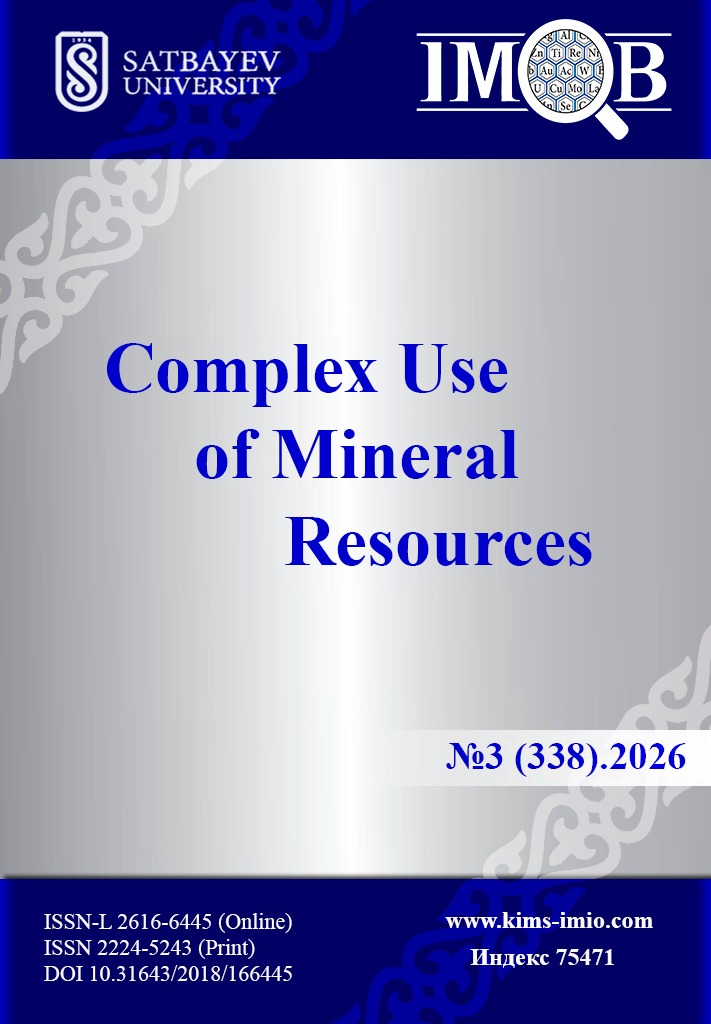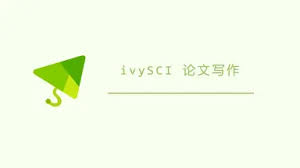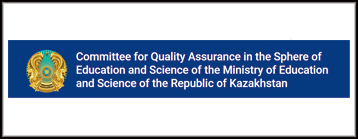Acoustoemission of Graphite and Graphene
DOI:
https://doi.org/10.31643/2026/6445.32Keywords:
acoustic emission, graphite, graphene, nanolayer, Fermi surface, crystal.Abstract
In this paper, we propose a model of the acoustic emission mechanism of natural graphite and graphene. The thickness of the surface layer R(I) of graphite varies from 0.9 nm in the parallel to 2.46 nm in the perpendicular plane and contains three graphene monolayers. Corrugations on the surface of free graphene arise due to high internal stresses, leading to significant deformation energy. An estimate of the deformation energy associated with the reconstruction of the surface of graphite and graphene is proposed. We imagine a graphite nanolayer as a potential well with infinitely high walls, then the energy levels of the nanolayer are determined by one fundamental parameter - the lattice constant of the crystal. The lattice constant a changes in the R(I) layer due to size effects. As soon as the parameter a stops changing, the spectrum of quantum states passes into a continuous spectrum, where the classical Drude–Lorentz laws are fulfilled for graphite. Since the surface layer of graphite is a two-dimensional quantum medium, three quantum planes of graphite with a1, a2 and a3 should be considered. The article considers one-, two- and three-layer graphene. The Fermi surface of graphene degenerates into the Dirac point, and the Fermi energy is zero. For two-layer graphene, the Fermi energy is EF = 0.9 eV, and for three-layer graphene - EF = 1.2 eV. Namely, all three quantum levels participate in the acoustic emission of graphite and graphene. In the article, it can be considered proven that in natural graphite (as well as in all solids), acoustic emission occurs due to the reconstruction of its surface, leading to the emergence of a surface layer R(I) and deformation energy Ed. The article proposes a thermoacoustics model that contains only experimentally determined parameters, and their accuracy is quite acceptable.
Downloads
References
Savvatimskii AI. Plavleniye grafita i zhidkogo ugleroda [Melting of graphite and liquid carbon]. Uspekhi Fizicheskikh Nauk [Advances in Physical Sciences]. 2003; 173(12):1371-1379. (in Russ.).
Jmurikov EI, Bubnenkov IA, Dremov VV, Samarin SI, Pokrovskii AS, Harkov DV. Grafit v nauke i yadernoi tehnike [Graphite in science and nuclear engineering]. Novosibirsk. 2013, 193. (in Russ.).
Panyukov SV, Subbotin AV, Arzhakov MV. Dimensional changes in bulk graphite caused by irradiation: Theory. Zhurnal Yadernykh Materilov. 2013; 439(1-3):72-83. https://doi.org/10.1016/j.jnucmat.2013.03.070
Kroto HW, Heath JR, O’Brien SC, Curl RF, Smalley RE. C60: Buckminsterfullerene. Nature. 1985; 318:162-163. https://doi.org/10.1038/318162a0
Iijima S. Helical microtubebules of graphitic carbon. Nature. 1991; 354(6348):56-58. https://doi.org/10.1038/354056a0
Novoselov KS, Geim AK, Morozov SV, Jiang D, Zhang I, Dubonos SV, Grigorieva IV, Firsov AA. Electric field effect in atomically thin carbon films. Science. 2004; 306(5696):666-669. https://doi.org/10.1126/science.1102896
Wu Y, Qiao P, Chong T, Shen Z. Carbon nanowalls grown by microwave plasma-enhanced chemical vapor deposition. Advanced Materials. 2002; 14(1):64-67.
Panin VE, Sergeev VP, Panin AV. Nanostrukturirovanie poverhnostnih sloev konstrukcionnih materialov i nanesenie nanostrukturnih pokritii [Nanostructuring of surface layers of structural materials and application of nanostructured coatings]. Tomsk. Izd vo TPU. 2010, 254. (in Russ.).
Muraveva OV, Blinova AV, Denisov LA, Bogdan OP. Osobennosti rasprostraneniya akusticheskih normalnih voln v tonkih poristih listah termorasshirennogo grafita [Features of Propagation of Acoustic Normal Waves in Ton-Porous Sheets of Thermally Expanded Graphite]. Pribori i metodi izmerenii. 2024; 15(3):213-230. (in Russ.).
Abidi IH, Weng L-T, Wong KPJ, Tyagi A, Gan L, Ding Y, et al. A New Approach to Revealing Individual Atomic Layers of 2D Materials and Their Heterostructures. Chemistry of Materials. 2018; 30(5):1718-1728. https://doi.org/10.1021/acs.chemmater.7b05371
Landau LD, Lifshic EM. Kurs teoreticheskoi fiziki. Kvantovaya mehanika _nerelyativistskaya teoriya [Course of Theoretical Physics. Quantum Mechanics (Nonrelativistic Theory)]. M.Fizmatlit. 2004; III:800. (in Russ.).
Moliver SS. Oje_spektroskopicheskoe proyavlenie korrelyacii elektronov poverhnosti Fermi grafita [Auger Spectroscopic Manifestation of Electron Patterns on the Fermi Surface of Graphite]. Fizika tverdogo tela. 2004; 46(9):1537-1543. (in Russ.).
Novoselov KS. Grafen_ materiali Flatlandii [Graphene: Materials of Flatland]. Uspehi fizicheskih nauk. 2011; 181(12):1299-1311. (in Russ.). https://doi.org/10.3367/UFNr.0181.201112f.1299
Zhang T. Graphene. From Theory to Applications. Springer. 2022, 142.
Ostrovskii PM. Elektronnie svoistva neuporyadochennogo grafena [Electronic Properties of Disordered Graphene]. Dissertaciya doktora fiz._mat. nauk_ Chernogolovka. 2019, 227. (in Russ.).
Rozhkov AV, Sboychakov AO, Rakhmanov AL, Nori F. Electronic Properties of Graphene-Based Bilayer Systems. Physics Reports. 2016; 648:1-104. http://dx.doi.org/10.1016/j.physrep.2016.07.003
Nimbalkar A, Kim H. Potential and Challenges of Twisted Bilayer Graphene: A Review. Nano-Micro Lett. 2020; 12(126):125-145. https://doi.org/10.1007/s40820-020-00464-8
Sboychakov AO, Rozhkov AV, Rakhmanov AL. Magic radius of the quantum dot of bilayer AA graphene. Modern Electrodynamics. 2022; 1(1):6-13. https://doi.org/10.1103/PhysRevB.105.235415
Codecido E, Wang QY, Koester R, Che S, Tian HD. Correlated insulating and superconducting states in twisted bilayer graphene below the magic one. Sci. Adv. 2019; 5(9):eaaw9770. https://doi.org/10.1126/sciadv.aaw9770
Lu X, Stepanov P, Yang W, Xie M, Aamir MA, Das I, Urgell C, Watanabe K, Taniguchi T, Zhang G, Bachtold A, MacDonald AH, Efetov DK. Superconductors, orbital magnets, and correlated states in bilayer magic-angle graphene. Nature. 2019; 574(7780):653-657. https://doi.org/10.1038/s41586-019-1695-0
Craciun MF, Russo S, Yamamoto M, Oostinga JB, Morpurgo AF, and Tarucha S. Trilayer graphene is a semimetal with a gate-tunable band overlap. Nature Nanotechnology. 2009; 4:383-388. https://doi.org/10.1103/PhysRevX.2.011004
Devakul T, Ledwith PJ, Xia L-Q, Uri A, de la Barrera S, Jarillo-Herrero P, and Fu L. Magic-angle helical trilayer graphene. Science Advances. 2023; 9(36):eadi6063. https://doi.org/10.1126/sciadv.adi6063
Builo SI. Fiziko_mehanicheskie_ statisticheskie i himicheskie aspekti akustiko_emissionnoi diagnostiki [Physicomechanical, statistical and chemical aspects of acoustic emission diagnostics]. Rostov_na_Donu; Taganrog_ Izdatelstvo Yujnogo federalnogo universiteta. 2017, 184. (in Russ.).
Kuleev II, Kuleev IG, Baharev SM, Inyushkin AV. Vremena relaksacii i dlini svobodnogo probega fononov v rejime granichnogo rasseyaniya dlya monokristallov kremniya [Relaxation times and mean free paths of phonons in the boundary scattering regime for silicon single crystals]. Fizika tverdogo tela. 2013; 55(1):24-35. (in Russ.).
Kokshaiskii AI, Shirgina NV, Korobov AI, Prohorov VM. Issledovanie akustouprugogo effekta v grafite [Study of the acoustoelastic effect in graphite]. Trudi shkoli_seminara Volni-2017. Akustika i akustooptika. 2017, 44-46. (in Russ.).
Baimova YuA, Dmitriev SV, Savin AV, Kivshar YuS. Skorosti zvuka i plotnosti fononnih sostoyanii v odnorodno deformirovannom ploskom liste grafena [Sound velocities and phonon state densities in a uniformly deformed flat graphene sheet]. Fizika tverdogo tela. 2012; 54(4):813-820. (in Russ.).
Boiko EV. Termoakustika grafenovih pokritii i vliyanie grafenovogo pokritiya na teplootdachu [Thermoacoustics of graphene coatings and the effect of graphene coating on heat transfer]. Dissertaciya kandidata fiz._mat. Nauk. Novosibirsk. 2024, 101. (in Russ.).
Chernov DV. Razrabotka metodov diagnostiki ustalostnih treschin s pomoschyu akusticheskoi emissii [Development of methods for diagnosing fatigue cracks using acoustic emission]. Dissertaciya kandidata tehnicheskih nauk. Moskva. 2018, 148.
Grigorev EV. Obosnovanie metoda kontrolya vliyaniya uprochnyayuschih obrabotok svarnih soedinenii na osnove rezultatov registracii signalov akusticheskoi emissii [Justification of the method for monitoring the influence of hardening treatments of welded joints based on the results of recording acoustic emission signals]. Dissertaciya kandidata tehnicheskih nauk. Sankt–Peterburg. 2024, 131. (in Russ.).
Downloads
Published
How to Cite
Issue
Section
License
Copyright (c) 2025 K.N. Zhangozin, V.M. Yurov, D.B. Kargin

This work is licensed under a Creative Commons Attribution 4.0 International License.


























